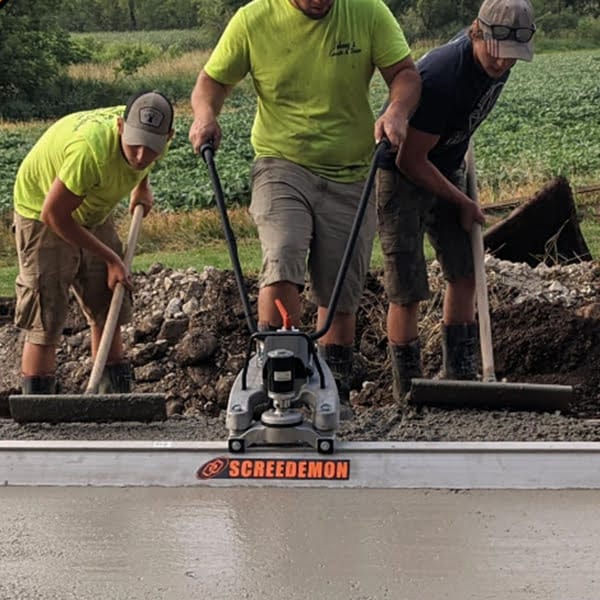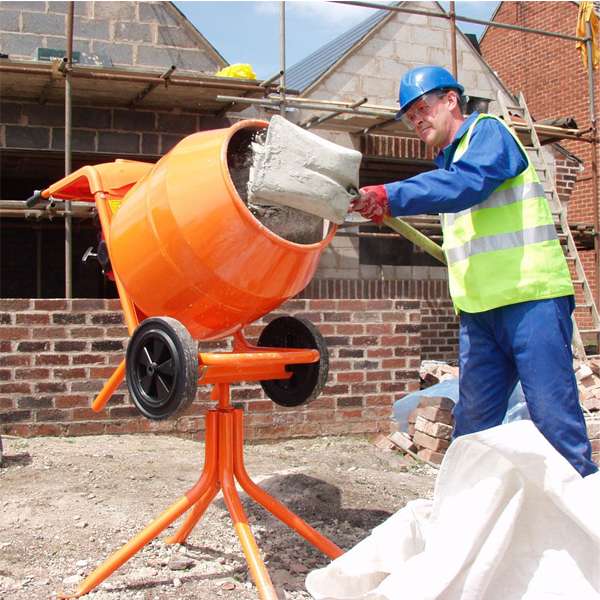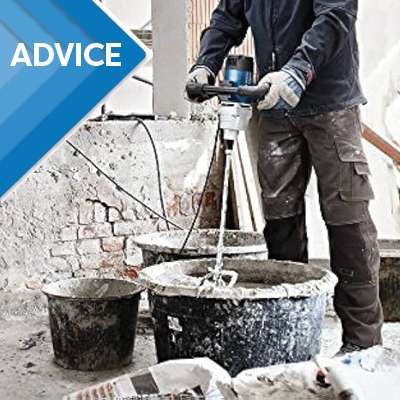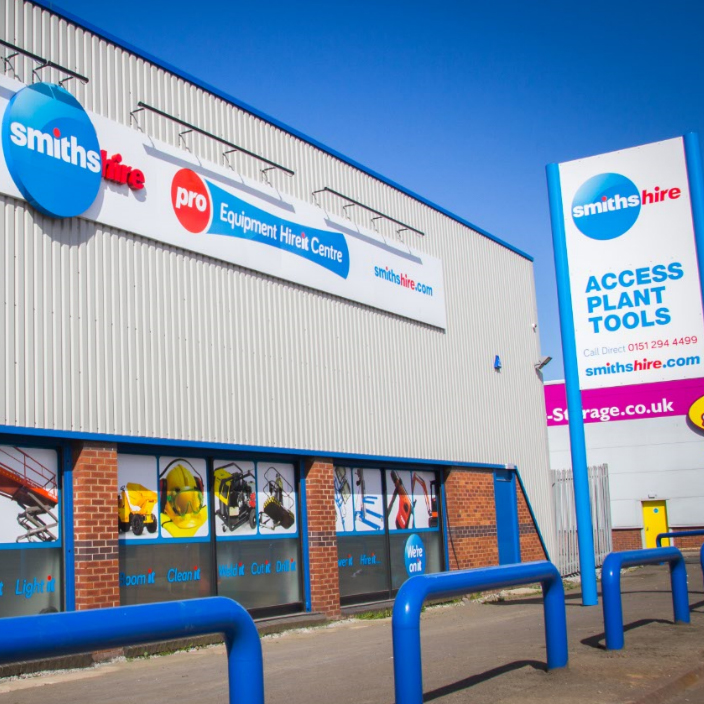If you’re planning to embark on a construction project, it’s always helpful to understand the basics of making and mixing concrete. Concrete is a mixture of cement, sand and gravel, or other similar coarse materials and water. Not to be confused with cement, which is an aggregate that’s used in concrete.
While the process may sound complicated, it’s actually quite simple, provided you have the necessary ingredients and prioritise all the required safety measures. So, if you’re in search of a straightforward guide to follow when mixing up your own concrete, you’re in the right place. This guide will cover everything from selecting the right ingredients to mixing and achieving the perfect texture that you can use in your construction projects.

Safety measures
While working with concrete may not be particularly dangerous when compared to other materials, like anything containing chemicals or synthetic materials, there are some associated risks if it is mishandled. Whether you’re on-site, at work or home, there are a few things to keep in mind while working with and around it to get the job done safely.
Personal protective equipment
When working with concrete in any capacity, it’s essential to use the relevant PPE. This includes:
- Gloves and work boots – to prevent contact with wet concrete, which can cause burns due to its high pH content. Wash off immediately with clean water if contact occurs.
- Ventilation face mask and protective goggles – to prevent inhalation or eye irritation from cement dust. Work in well-ventilated areas to minimise exposure, and use appropriate ventilation and protective gear if working indoors.
Training and legal requirements
When concrete is being used in the workplace or on-site, it’s the employer’s responsibility to control all risks. This can be achieved through the implementation of preventive measures such as using pre-mixed concrete and long-handled tools, and regular review of working conditions to ensure safety. Equally important, all staff members should be trained to recognise potential problems and identify any skin issues early. This not only ensures effective treatment but also underscores the importance of their role in maintaining their health.
The proper handling of equipment and materials
To prevent injuries, it’s imperative that everyone working on or around concrete knows how to properly handle equipment like concrete mixers and the lighting of any other heavy materials. The employer needs to provide the necessary training.
Tools and ingredients you will need:
- A bag of cement
- A bag of crushed gravel or small stones
- A bag of sand
- Water
- Wheelbarrow
- Large bucket for the stones/gravel
- Large bucket for mixing
- Electric handheld mixer or concrete mixer
- Shovel

Step 1: Measure out your ingredients
Many people will have their preferred ways of mixing concrete to their preferred consistency, but as a general rule of thumb, concrete usually has two parts sand, four parts gravel/stone mixture, and one part cement. Adding more or less of each ingredient can affect the consistency and toughness of your concrete. This is just a standard mixture.
Step 2: Start mixing
Now that you have everything measured out, you can start combining it. If you’re mixing by hand, start with your gravel. Pour the amount of gravel you’re using into your bucket, and then add the sand, mixing as you go. When the sand and gravel are fully combined, add the cement to ensure everything is mixing evenly. For an even mix, use an electric handheld mixer. If you’re mixing large amounts of concrete, it’s best to mix everything in a concrete mixer.
Step 3: Slowly add in water
You’ll notice that in our list of ingredients, we didn’t give you the amount of water you’d need because it varies depending on the consistency you’re looking for. Start by adding water slowly and mixing thoroughly at all times so you can see the consistency start to develop. Do this until you have reached your desired concrete consistency. If it’s the first time you’re making concrete, generally, you want it to be not too stiff and not too runny; think of the consistency of thick porridge. If you accidentally add too much water, you can readjust the mixture by adding in more of your other ingredients, like sand and gravel, to even it back out.
Step 4: The final mix
Once you think you’re happy with the consistency of your concrete, it’s best to run a final mix. This goes for mixing it by hand or in a machine. Just keep mixing until you’re absolutely sure no powder or loose materials remain and everything is evenly incorporated into the mixture before you intend to use it in a project. And that’s all there is to it! Now, you can use it for whatever you need, and you can easily make more when you run out.

For over 50 years, Smiths Hire has been the go-to destination for quality equipment and tool hire services for both DIY enthusiasts and trade professionals. With 17 tool hire depots across the North West and Yorkshire, including prime locations in Manchester, Liverpool, and Leeds, we’re never too far away! If you’re unsure about anything you need for concrete mixing or you need to hire a concrete mixer, our team is just a phone call away on 0333 323 2100. We’re always happy to help you get the job done right!

 SPEAK TO US
SPEAK TO US




